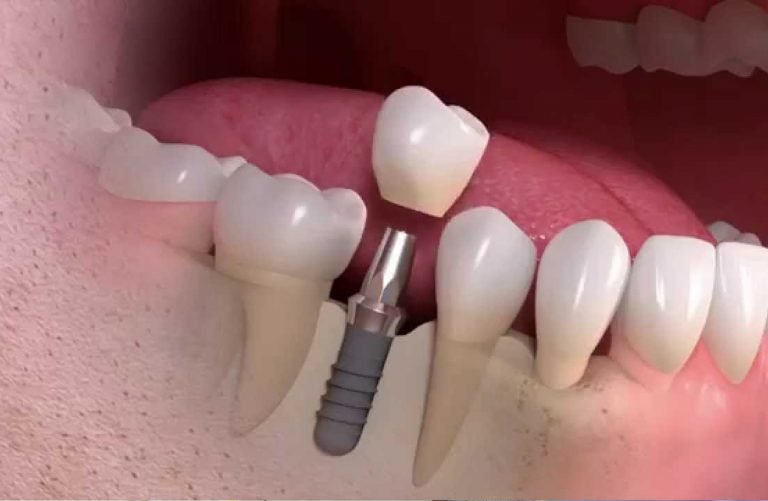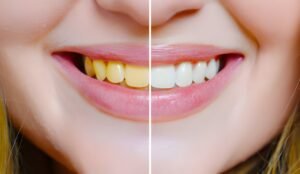Losing teeth can be a challenging experience, affecting both our dental function and our smile’s aesthetic appeal. Dental implants offer a long-term and stable solution to replace missing teeth. In some instances, a single dental implant can even replace two adjacent teeth, particularly in the front of the mouth, where teeth are narrower and subjected to less force. However, achieving the desired result of having these two replacement teeth look and function like individual teeth requires a skilled technique known as gum shaping. In this article, we will explore how a single implant can replace two teeth and the importance of gum shaping in achieving a natural and aesthetically pleasing outcome.
Can One Implant Replace Two Teeth?
When faced with the loss of one or more teeth, the option of dental implants becomes a viable and effective solution. But what about cases where two adjacent teeth are missing? Can a single dental implant truly replace them both?
The answer is yes, it is possible to replace two adjacent teeth with a single implant. This is particularly common in the front of the mouth, where the teeth are narrower and usually experience less force than molars at the back.
The Challenge: Mimicking Natural Teeth
One of the primary challenges in replacing two adjacent teeth with one implant is to make them appear and function like two separate, natural teeth. The key to achieving this lies in the art of gum shaping. Without proper gum shaping, the two replacement teeth may appear as though they are stuck together, creating an unsightly and unhygienic gap between them and the gum interface.
The Importance of Gum Shaping
Gum shaping is a highly skilled and technical procedure that involves creating subtle indentations in the gum to mimic the natural contours and shapes of healthy teeth. When done correctly, these indentations enable the replacement teeth to fit seamlessly into the gum, giving the appearance of two individual teeth.
Imagine the contour of your gums as a canvas, and gum shaping as the art of sculpting it to perfection. This procedure is essential to create the ‘U-Shapes’ typically seen around healthy teeth, making the implant-supported teeth look natural.
Aesthetic vs. Cosmetic Dentistry
It’s important to note that achieving a natural look and function is the essence of aesthetic dentistry, which differs from cosmetic dentistry. Aesthetic dentistry aims to provide teeth that not only look like real teeth but also work and function effectively, just like natural healthy teeth. In contrast, cosmetic dentistry may focus solely on improving appearance without enhancing functionality.
One to Three Dental Implants
When you have one to three missing teeth, a single implant or an implant-supported bridge can be a practical and effective solution. This approach not only restores your smile but also preserves your remaining teeth and bone structure.
The Impact of Missing Teeth
Missing even one tooth can have significant consequences. It can lead to self-consciousness about your smile, difficulty in eating comfortably, and even physical issues like muscle strains and headaches. Therefore, finding a suitable solution is crucial.
The Convenience of Crown Preparation
Before placing your dental implant, your crown is milled and ready, thanks to advanced digital technology. With CAD planning and in-house CNC Dental Milling machines, your dental implant and crown can be placed during a routine appointment, allowing you to continue with your day without interruption.
The Benefits of Single Tooth Implants
Replacing a single missing tooth with an implant is a conservative approach that avoids modifying adjacent healthy teeth. The implant-retained crown emerges through your gum, giving it a natural appearance that blends seamlessly with your other teeth. This method is not only aesthetically pleasing but also easier to maintain compared to tooth-supported bridges.
Implant-Supported Bridgework for Several Missing Teeth
In cases where multiple teeth are missing, two or more implants can support a bridge spanning three or more teeth. The number of implants required depends on the specific situation, with patients with stronger bites potentially needing more implants to distribute the load evenly.
This implant-supported bridgework is advantageous because it eliminates the need to prepare neighbouring teeth for support, as the implant construction directly replaces the missing teeth.
Conclusion
The ability of a single implant to replace two teeth is a testament to the advancements in modern dentistry. However, achieving a natural look and function requires the expertise of a skilled dentist in Aberdeen who can perform gum shaping to perfection. Whether you’re considering a single implant or need a solution for several missing teeth, the goal of aesthetic dentistry is to provide teeth that not only look like real teeth but also work as effectively as natural healthy teeth.
To learn more about how Bridge St Aesthetic and Dental Implant Clinic Aberdeen can help you achieve a beautiful and functional smile, contact us today for a consultation. Your journey to a confident smile begins here.
Frequently Asked Questions (FAQs)
Is gum shaping painful?
Gum shaping is usually performed under local anaesthesia, so discomfort is minimal. Most patients report mild soreness that subsides quickly.
Can anyone get dental implants?
Most healthy individuals are candidates for dental implants, but a thorough evaluation is necessary to determine eligibility.
How do I care for my implant-supported teeth?
Treat them like natural teeth—brush, floss, and attend regular check-ups. Implants require proper oral hygiene for longevity.
Are dental implants expensive?
The cost varies, but dental implants are a long-term investment in oral health and aesthetics, often outweighing alternative treatments.
Can implants replace multiple missing teeth?
Yes, dental implants can replace multiple missing teeth, either individually or as part of implant-supported bridges or dentures.







